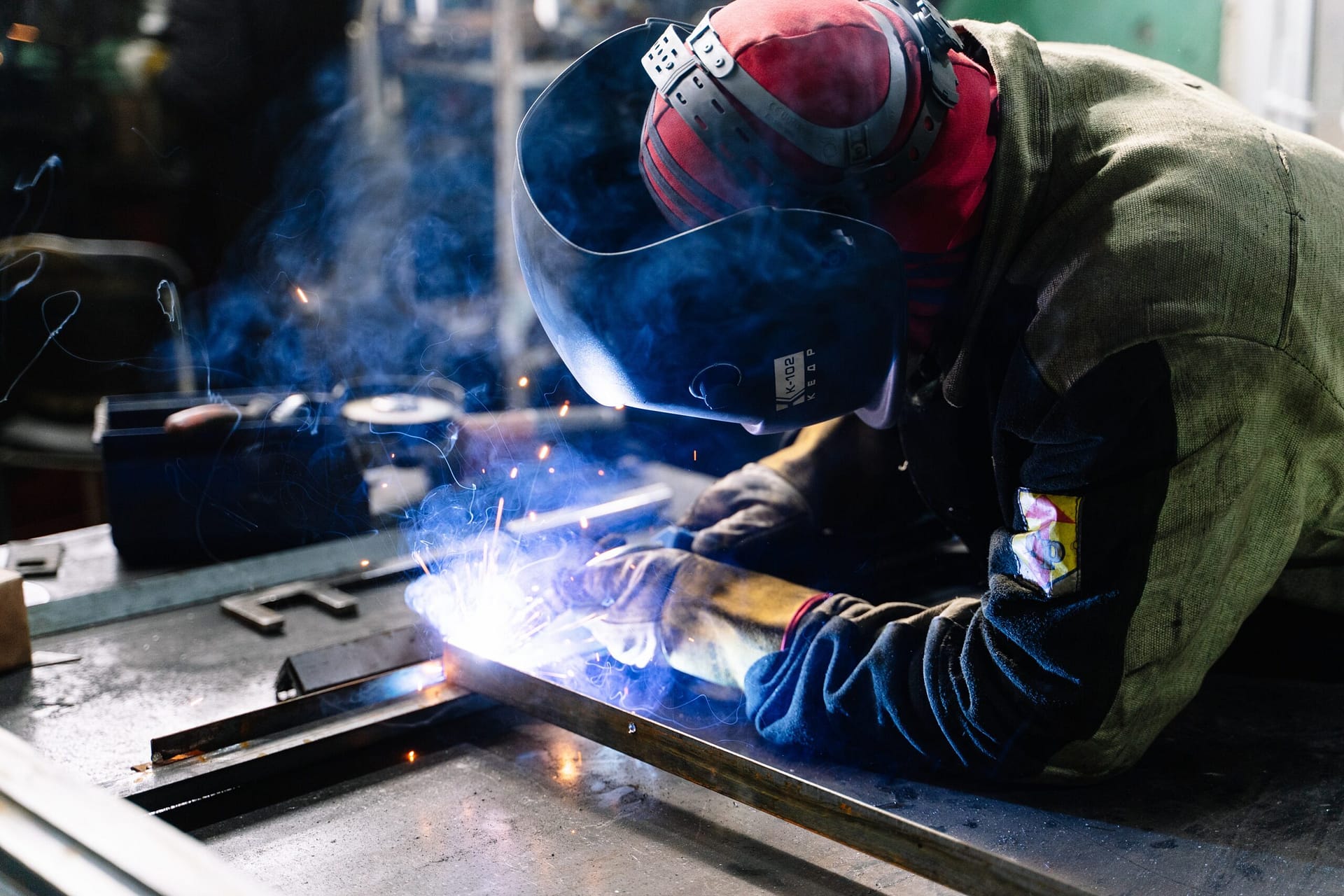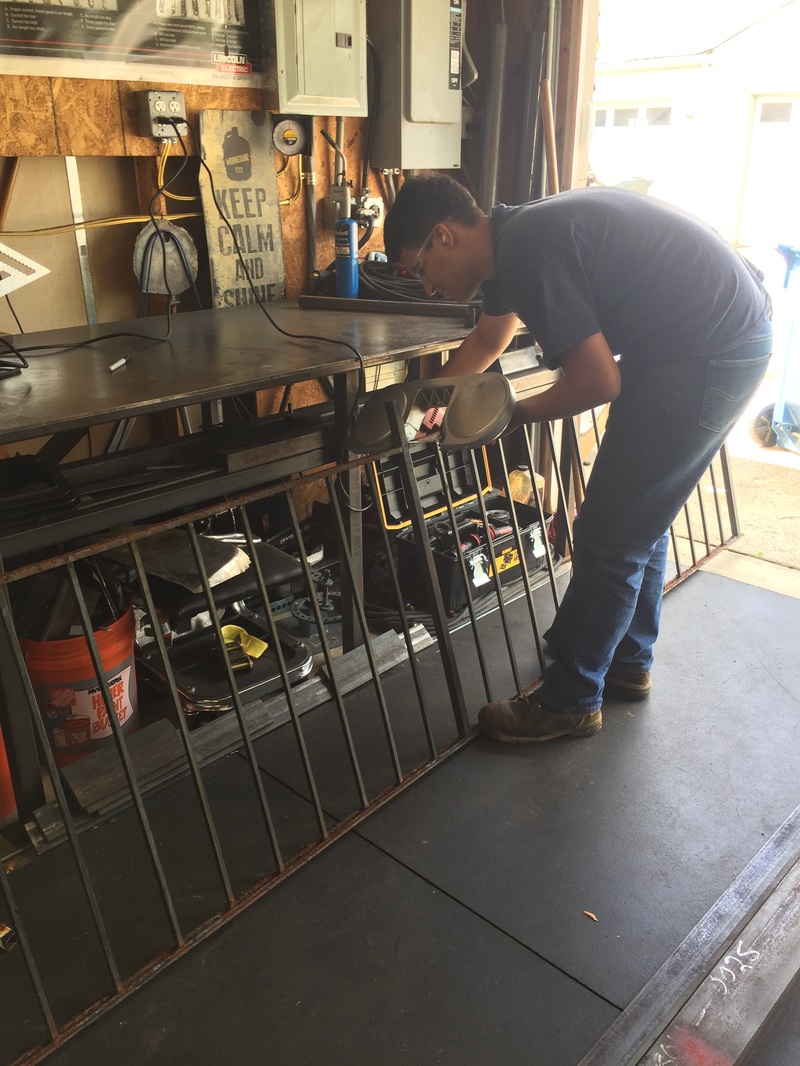Usual Welding Repair Work Issues and How to Address Them Effectively
Welding repair work often encounter an array of concerns that can endanger the honesty of the end product. Typical problems include insufficient infiltration, porosity, and imbalance, amongst others. Each problem offers special difficulties that need specific methods for resolution. Comprehending these issues is essential for welders aiming to enhance their skills and results. This conversation will certainly explore these common welding repair service concerns and effective methods to address them.
Insufficient Infiltration
Inadequate penetration occurs when the weld metal fails to completely fuse with the base product, causing weak joints and prospective architectural failures. This problem typically comes from inadequate warmth input, inaccurate electrode angle, or incorrect welding rate. Welders may encounter poor infiltration as a result of a mistake of the required criteria for a certain material thickness or kind. Additionally, contamination on the base product's surface can prevent reliable bonding, worsening the issue. To attend to insufficient infiltration, welders ought to assure ideal settings on their devices and preserve a tidy work surface area. Routine examination of welds is advised to recognize any type of deficiencies early, permitting prompt modifications and the avoidance of jeopardized structural honesty in bonded settings up.
Porosity
Porosity is a common flaw in bonded joints that materializes as little gas bubbles caught within the weld metal. This issue can jeopardize the integrity of the weld, leading to minimized toughness and possible failure under anxiety. Belgrade Welding. Porosity normally occurs from contamination, dampness, or incorrect welding techniques, which allow gases to run away into the molten weld pool. To resolve porosity, welders should ensure proper surface prep work, maintain a tidy workplace, and use appropriate welding parameters. Furthermore, choosing the appropriate filler material and shielding gas can minimize gas entrapment. Routine examination and testing of welds can assist identify porosity early, ensuring timely rehabilitative activities are taken, thus preserving the quality and reliability of the bonded framework
Imbalance
Imbalance in welding can arise from numerous elements, consisting of inappropriate arrangement and thermal expansion. Recognizing the origin triggers is important for reliable resolution. Numerous improvement techniques are readily available to straighten components and assure structural stability.
Reasons for Misalignment
Welding misalignment commonly comes from a range of underlying concerns that can endanger architectural stability. One primary cause is incorrect fit-up of components before welding, which can lead to voids and uneven surface areas. Variations in thermal expansion throughout the welding procedure can additionally result in distortion, specifically if the products being signed up with have different coefficients of growth. In addition, poor clamping and fixturing may stop working to hold elements safely in position, causing motion throughout welding. Poorly maintained tools, consisting of welding equipments and devices, may introduce incongruities in the weld grain, additional adding to misalignment. Lastly, driver error, stemming from not enough training or experience, can also play a significant role in creating misaligned welds.
Adjustment Strategies Readily Available
Addressing misalignment properly calls for a mix of rehabilitative methods customized to the particular problems at hand. One typical technique is using jigs or fixtures to hold parts in the correct setting during welding, guaranteeing regular positioning. In addition, preheating the materials can assist reduce distortion and boost fit-up. For considerable imbalance, mechanical adjustment methods, such as using hydraulic jacks or clamps, can be utilized to correct the setting prior to welding. Post-weld heat therapy might also be required to ease tensions caused by imbalance. Mindful assessment and adjustment throughout the setup stage can stop imbalance problems from ending up being considerable problems, promoting a smoother welding process and improving total structural honesty.
Distortion
Distortion is a typical difficulty in welding that can occur from different variables, consisting of unequal home heating and air conditioning. Comprehending the root causes of distortion is necessary for carrying out reliable avoidance techniques. Resolving this issue not just boosts structural integrity yet additionally improves the general high quality of the weld.
Root causes of Distortion
When based on the extreme heat of welding, materials usually undergo changes that can bring about distortion. This sensation largely arises from thermal growth and tightening throughout the welding process. As the weld location warms up, the material expands; upon air conditioning, it acquires, which can produce inner tensions. Additionally, unequal home heating throughout a workpiece can aggravate these anxieties, resulting in warping or flexing. The type of product also plays a substantial role; metals with differing thermal conductivity and coefficients of expansion might respond in different ways, leading to unforeseeable distortions. In addition, bad joint style and insufficient fixturing can add to imbalance during welding, boosting the possibility of distortion. Comprehending these reasons is necessary for effective welding repair service and prevention techniques.
Avoidance Techniques
Effective avoidance methods for distortion throughout welding concentrate on controlling warmth input and making sure proper joint style. Preserving a constant warm input assists to decrease thermal growth and contraction, which can result in distortion. Utilizing methods such as preheating the work surface can also minimize the temperature level gradient, advertising consistent home heating. In addition, selecting proper joint layouts, such as T-joints or lap joints, can boost stability and minimize stress and anxiety concentrations. Implementing appropriate fixturing to protect the work surfaces in location even more help in preserving placement throughout the welding process. Ultimately, staggered welding sequences can disperse warm a lot more equally, avoiding localized distortion. By applying these strategies, welders can significantly decrease the likelihood of distortion and enhance the general high quality of their welds.
Cracking
Fracturing is an usual problem experienced in welding repairs, often resulting from different elements such as incorrect air conditioning prices, material option, or insufficient joint prep work. The occurrence of splits can significantly endanger the integrity of the weld, causing prospective failings during operation. To resolve this problem, welders should initially assess the origin creates, ensuring that materials are compatible and suitably selected for the specific application. Additionally, regulating the cooling price during the welding process is crucial; quick cooling can generate stress and result in fracturing. Appropriate joint style and prep work additionally add to lessening the danger. Executing these methods can improve weld high quality and sturdiness, ultimately lowering the chance of breaking in completed weldments.

Incomplete Fusion
A substantial problem in welding repairs is insufficient combination, which takes place when the weld metal does not appropriately bond with the base material or previous weld passes - Montana Mobile Welding and Repair Belgrade Welding. This flaw can lead to weaknesses in the joint, potentially endangering the integrity of the welded framework. Factors adding to incomplete blend consist of insufficient heat input, improper welding technique, and contamination of the surface areas being joined. To address this problem successfully, welders need to assure appropriate pre-weld cleaning and surface area preparation, along with change their welding parameters to attain appropriate penetration and blend. Normal inspection during the welding procedure can also aid identify incomplete fusion early, enabling prompt restorative measures to boost the total high quality of the weld
Overheating
While welding repair work can boost architectural honesty, overheating provides a considerable challenge that can result in material deterioration. Too much warmth throughout welding can change the mechanical residential or commercial properties of metals, resulting in lowered stamina, raised brittleness, and warping. This phenomenon is especially crucial in high-stress applications where architectural reliability is vital. Identifying overheating can entail aesthetic inspections for staining or distortion, along with monitoring temperature throughout the welding procedure. To alleviate the threats linked with getting too hot, welders should use ideal techniques, such as regulating warmth input, adjusting traveling rate, and using ideal filler materials. Additionally, implementing pre- and post-weld warm therapies can aid recover product residential or commercial properties and improve the total top quality of the repair, making sure long-lasting efficiency and safety and security.
Regularly Asked Questions
What Are the Common Signs of a Welding Issue?

Exactly How Can I Examine My Welds for Top quality?
To evaluate welds for top quality, one can make use of visual evaluations, ultrasonic screening, and radiographic methods. Each method assures architectural integrity, recognizes flaws, and validates adherence to specified standards, eventually improving the dependability of the bonded joints.
What Security Preventative Measures Should I Take While Welding?
When welding, one ought to focus on safety and security by wearing suitable individual protective tools, making sure read more proper ventilation, safeguarding combustible products away, preserving a tidy workspace, and recognizing environments to stop crashes and injuries.
Can I Repair a Weld Without Renovating the Entire Joint?
Repairing a weld without renovating the whole joint is feasible, depending upon the damage (Montana Mobile Welding and Repair Fabrication). Strategies such as grinding, including filler material, or making use of a welding procedure can properly resolve specific defects while preserving the surrounding structure
What Equipment Are Necessary for Efficient Welding Repairs?
Important tools for effective welding repair services consist of a welding equipment, wire brush, grinder, safety gear, clamps, and filler materials. Each device plays an important duty in making sure top quality and safety during the repair process. Porosity generally occurs from contamination, moisture, or improper welding strategies, which enable gases to escape right into the molten weld pool. Poorly conserved equipment, consisting of welding machines and tools, might introduce incongruities in the weld bead, more adding to imbalance. When subjected to the intense heat of welding, products typically undertake adjustments that can lead to distortion. Cracking is an usual issue experienced in welding repairs, often resulting from different aspects such as incorrect cooling prices, product option, or poor joint prep work. A considerable problem in welding repair services is insufficient combination, which takes place when the weld steel does not sufficiently bond with the base product or previous weld passes.